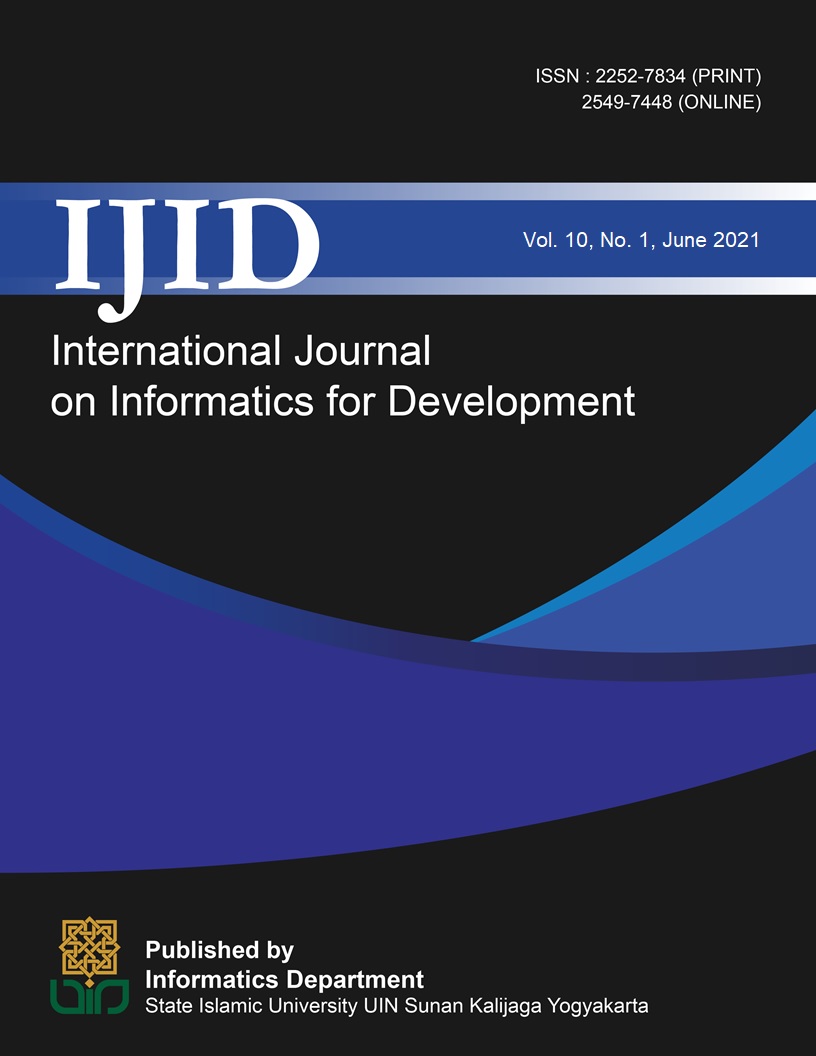Abstract
DHCP Server as part of the network infrastructure in charge of distributing host configurations to all devices has the potential to be controlled. If the DHCP Server is successfully controlled, all network devices connected to the server can potentially be controlled. From the observations made at PT. Rekayasa Engineering found a vulnerability in the DHCP Server that has the potential to experience DHCP Rogue or DHCP Spoofing, where the client will fail to communicate with the authorized DHCP Server, as well as open the door for attackers to enter the network. For this reason, DHCP Snooping and DHCP Alert methods are implemented. DHCP Snooping will ensure that every data traffic has been filtered and directed to the registered interface. Meanwhile, the use of DHCP Alert is required in monitoring data traffic during the Discover, Offer, Request, and Acknowledge (DORA) process. In the tests performed, DHCP Snooping and DHCP Alert managed to anticipate attacks that tried to placed DHCP Rogue on the network infrastructure. DHCP Alert, configured on the proxy router, ensures that the DORA process can only occur between an authorized DHCP server and a client. DHCP Snooping test also shows that communication from clients can only be replied to by Trusted DHCP Server. The existence of DHCP Snooping and DHCP Alert makes the host configuration fully controlled by the authorized DHCP Server.
References
O. S. Younes, “A Secure DHCP Protocol to Mitigate LAN Attacks,” J. Comput. Commun., vol. 04, no. 01, pp. 39–50, 2016, doi: 10.4236/jcc.2016.41005.
M. Yaibuates and R. Chaisricharoen, “Starvation Delayed DHCP Service for Enabling Pool Recovery,” Malaysian J. Comput. Sci. Inf. Technol. Electr. Eng., no. Special Issue 2019, pp. 15–34, 2019, doi: 10.22452/mjcs.sp2019no2.2.
N. Abdulhafiz, E. Faith, and O. Oyenike, “Mitigating DHCP Starvation Attack Using Snooping Technique,” FUDMA J. Sci., vol. 4, no. 1, pp. 560–566, 2020.
Z. Miftah, “Simulasi Keamanan Jaringan Dengan Metode DHCP Snooping Dan VLAN,” Fakt. Exacta, vol. 11, no. 2, pp. 167–168, 2018, doi: 10.30998/faktorexacta.v11i2.2456.
S. Naaz and F. A. Badroo, “Investigasi Protokol DHCP dan DNS Menggunakan Wireshark,” IOSR J. Comput. Eng., vol. 18, no. May-June 2016, 2016, doi: 10.9790/0661-1803020108.
A. Yan, S. Jing, Q. Qi, and B. Xiao, “A Study on Campus Network Access and Export Management,” in 2nd Workshop on Advanced Research and Technology in Industry Application (WARTIA 2016), 2016, no. WARTIA 2016, pp. 1814–1818, doi: 10.2991/wartia-16.2016.359.
W. Odom, Cisco CCNA: Routing and Switching 200-120 Official Cert Guide Library, April 2013. Indianapolis, USA: Cisco Press, 2013.
M. Yaibuates and R. Chaisricharoen, “Implementing of IP address Recovery for DHCP Service,” Int. J. Appl. Eng. Res., vol. 13, no. 5, pp. 2659–2662, 2018, [Online]. Available: http://www.ripublication.com.
D. Kurnia, “Analisis Serangan DHCP Starvation Attack Pada Router OS Mikrotik,” J. Ilm. Core IT, vol. 8, no. 5, pp. 12–17, 2020.
MikroTik, “DHCP Snooping and DHCP Option 82,” Manual:Interface/Bridge. https://wiki.mikrotik.com/wiki/Manual:Interface/Bridge#DHCP_Snooping_and_DHCP_Option_82 (accessed Jan. 19, 2021).
D. Diwan, V. K. Narang, and A. K. Singh, “Security Mechanism in RIPv2 , EIGRP and OSPF for Campus Network - A Review,” Int. J. Comput. Sci. Trends Technol., vol. 5, no. 2, pp. 399–404, 2017.
T. Ariyadi, “Mitigasi Keamanan Dynamic Host Control Protocl (DHCP) Untuk Mengurangi Serangan Pada Local Area Network (LAN),” Inovtek Polbeng - Seri Inform., vol. 3, no. 2, pp. 147–154, 2018, doi: 10.35314/isi.v3i2.455.
R. Natarajan, “Different Possibilities of DHCP Attacks and Their Security Features,” Glob. Res. Dev. J. Eng., vol. 1, no. 1, pp. 20–23, 2015.
J. West, J. Andrews, and T. Dean, Network+ Guide to Networks, 8th Ed. Boston, USA: Cengage Learning, 2019.
D. C. Hewlett-Packard, “HP Switch Software Multicast and Routing Guide for K/KA/KB.15.18,” August, 3rd, 2015. https://techhub.hpe.com/eginfolib/networking/docs/switches/K-KA-KB/15-18/5998-8164_mrg/content/ch12s11.html (accessed Jan. 01, 2021).

This work is licensed under a Creative Commons Attribution-NonCommercial-NoDerivatives 4.0 International License.
Copyright (c) 2021 IJID (International Journal on Informatics for Development)
